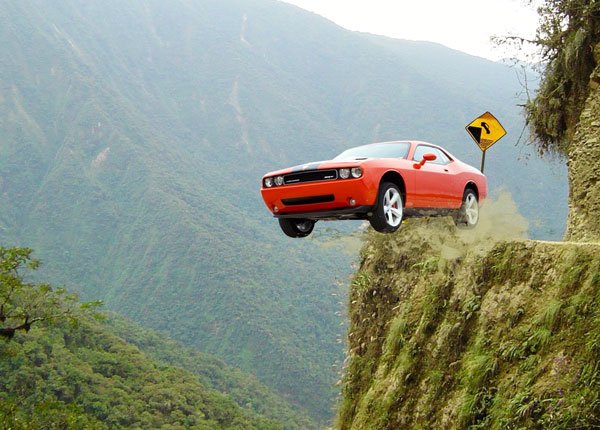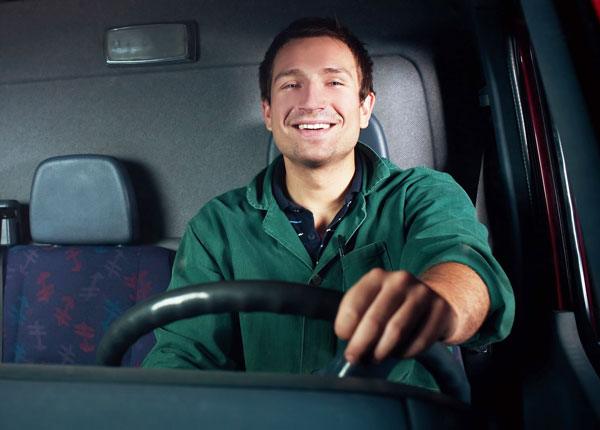
Using Escape Techniques to Avoid Traffic Collisions: Driving Safety Rules
Updated Dec. 14, 2020Even the most careful and conscientious driver will occasionally find themselves in an emergency situation where a collision seems imminent. You will have a better chance of avoiding a collision or coming out unharmed if you remain calm and do not let panic take over.
Many drivers report that time seems to pass so quickly in an emergency that they did not have time to react. This is usually the result of the body’s adrenaline response when under threat. In fact, you may have several seconds to react to a dangerous situation and avoid a collision. Even with just one or two seconds to respond, remaining calm will help you take the necessary evasive action.
You can help yourself remain calm and take appropriate action in an emergency by focusing on this simple truth: you only have three choices. To avoid a collision, a driver may:
- Stop
- Turn
- Speed up
All you must do is identify which of these options will best help you avoid a collision, then execute that action calmly and effectively.
Emergency stop
Attempting to stop is the action most drivers instinctively take when faced with an impending collision, though it is often not the most sensible. Turning to avoid a collision may be smarter, as coming to a stop usually takes longer.
Stopping safely in an emergency is not just a matter of slamming on your brakes. To stop, you must know what type of brakes your vehicle uses and how you should use them effectively. The key thing you should know before setting off on a journey in any vehicle is whether it is equipped with an Antilock Braking System (ABS).
Most modern vehicles are fitted with ABS. If this is the case, you should press firmly down on the brake pedal to activate your antilock braking system in an emergency. Do not release or pump the brakes, as this will disengage the ABS.
If your vehicle uses conventional brakes, you should repeatedly press and release the brakes without pressing down all the way. Applying the brakes too firmly or too suddenly could cause your wheels to lock and throw the vehicle into a skid.
Emergency turns
It is nearly always quicker to turn a vehicle than to stop it. When there is not enough room ahead of your car to bring it to a complete stop, steering away from the oncoming hazard is your only option. Remember to stay calm and execute the maneuver with care, rather than panic.
- Do not apply the brake while turning to avoid a collision.
- Resist the urge to turn any more than is necessary to avoid the obstacle. Making a larger or sharper turn could cause a skid or roll your vehicle.
- Be ready to counter-steer when you have cleared the obstacle.
- Turn with both hands on the steering wheel and maintain a firm grip.
Speeding up
You may encounter an emergency situation where a collision can only be avoided by speeding up. This would be the case if another vehicle is about to hit you from behind, or from the side. Of course, you can only speed up to escape the collision when there is room in front of your vehicle. Otherwise, you will be avoiding one crash by creating another.
Try not to slam on the gas pedal too hard when attempting to speed up, as it could cause your wheels to skid and leave you stationary. Instead, apply increasing pressure to the gas pedal in a fast but controlled manner. Once you have avoided the crash, be sure to reduce your speed and maintain a safe distance from the vehicle in front of you.
Reducing the consequences
There may be occasions where you cannot entirely avoid a collision or accident. However, there are likely to be actions you can take to make the impact of the collision less severe for you and the other people involved. To reduce the consequences of a collision:
- 1

Turn to avoid head-on collisions, as these are always bad news for everybody involved.
- 2

Rather than allowing your vehicle to skid off the road, drive off the road to maintain better control.
- 3

Steer to collide with something soft, rather than something hard. For instance, steer toward a row of bushes rather than the side of a building.
- 4

Collide with a stationary object rather than one that is approaching you. This will reduce the overall impact of the crash. It is also possible that the stationary object does not contain another person as would be the case with an oncoming vehicle, so you can remove one potentially injured party from the equation.
- 5

Always steer to avoid oncoming traffic. As we mentioned above, head-on collisions can be disastrous. Taking your vehicle directly into a stream of oncoming vehicles could cause a deadly, multi-car collision.
Protecting yourself during a crash
When the realization hits that you cannot avoid an accident, do your best not to panic. There will still be actions you can take to protect yourself. The single most important action you can take is to put on your seat belt at the start of your journey. Remember this every time you get into a vehicle as a driver or passenger.
If a crash is imminent, consider the following points:
- Are you about to be hit from the rear? Press your head back into the headrest. This will help to prevent whiplash as your vehicle lurches forward. Be prepared to hit the brakes to avoid colliding with cars in front of you.
- Are you about to be hit from the front? If you are wearing your seat belt, use your arms and hands to protect your face from broken glass and other debris.
- Are you about to be hit from the side? Be ready to counter-steer to recover from the impact. You could be knocked into the path of another vehicle.




